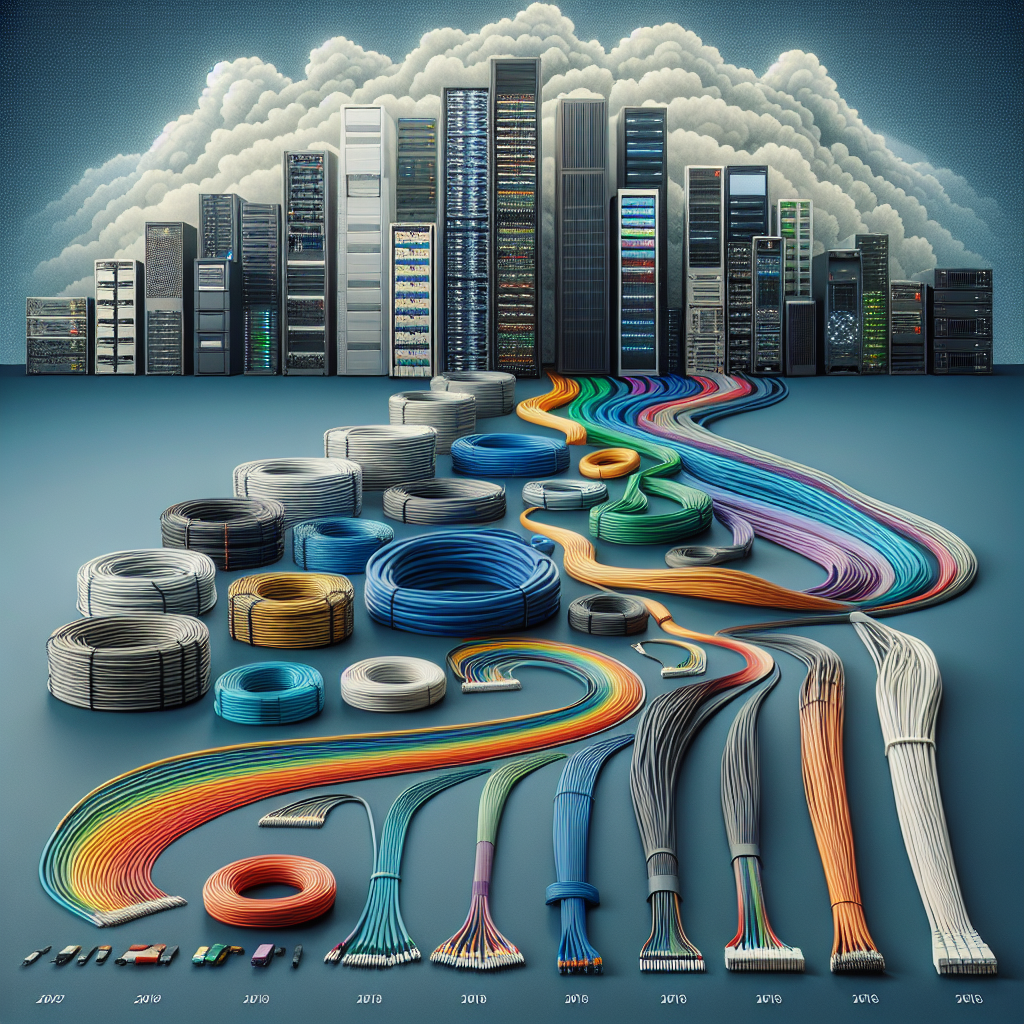Your cart is currently empty!
The Evolution of Data Center Cabling: Trends and Technologies

Data center cabling has come a long way since the early days of computing. As technology has evolved, so too has the need for faster and more efficient data transmission within data centers. In this article, we will explore the trends and technologies that have shaped the evolution of data center cabling.
One of the key trends in data center cabling is the move towards higher speeds and greater bandwidth. With the rise of cloud computing, big data, and IoT devices, data centers are processing more data than ever before. This has led to the development of new cabling standards, such as Category 8 Ethernet, which can support speeds of up to 40Gbps over copper cabling.
Another trend in data center cabling is the move towards higher-density cabling solutions. As data centers continue to grow in size and complexity, there is a need for cabling solutions that can support a larger number of connections in a smaller amount of space. This has led to the development of technologies such as high-density fiber optic cabling and MPO (multi-fiber push-on) connectors, which can support hundreds of connections in a single cable.
In addition to higher speeds and greater density, data center cabling is also becoming more flexible and modular. Traditional cabling systems often required a significant amount of time and effort to install and maintain. However, newer technologies, such as pre-terminated cabling systems and modular patch panels, allow for faster and easier installation, as well as easier scalability as data center needs change.
One of the biggest challenges facing data center cabling is the increasing demand for power. As data centers continue to grow in size and complexity, the amount of power required to support them is also increasing. This has led to the development of technologies such as Power over Ethernet (PoE) and intelligent power distribution units, which can help to reduce power consumption and increase energy efficiency within data centers.
Overall, the evolution of data center cabling has been driven by the need for faster speeds, greater bandwidth, higher density, and increased flexibility. As technology continues to advance, we can expect to see even more innovations in data center cabling, as companies strive to keep up with the ever-increasing demands of the digital economy.

Leave a Reply